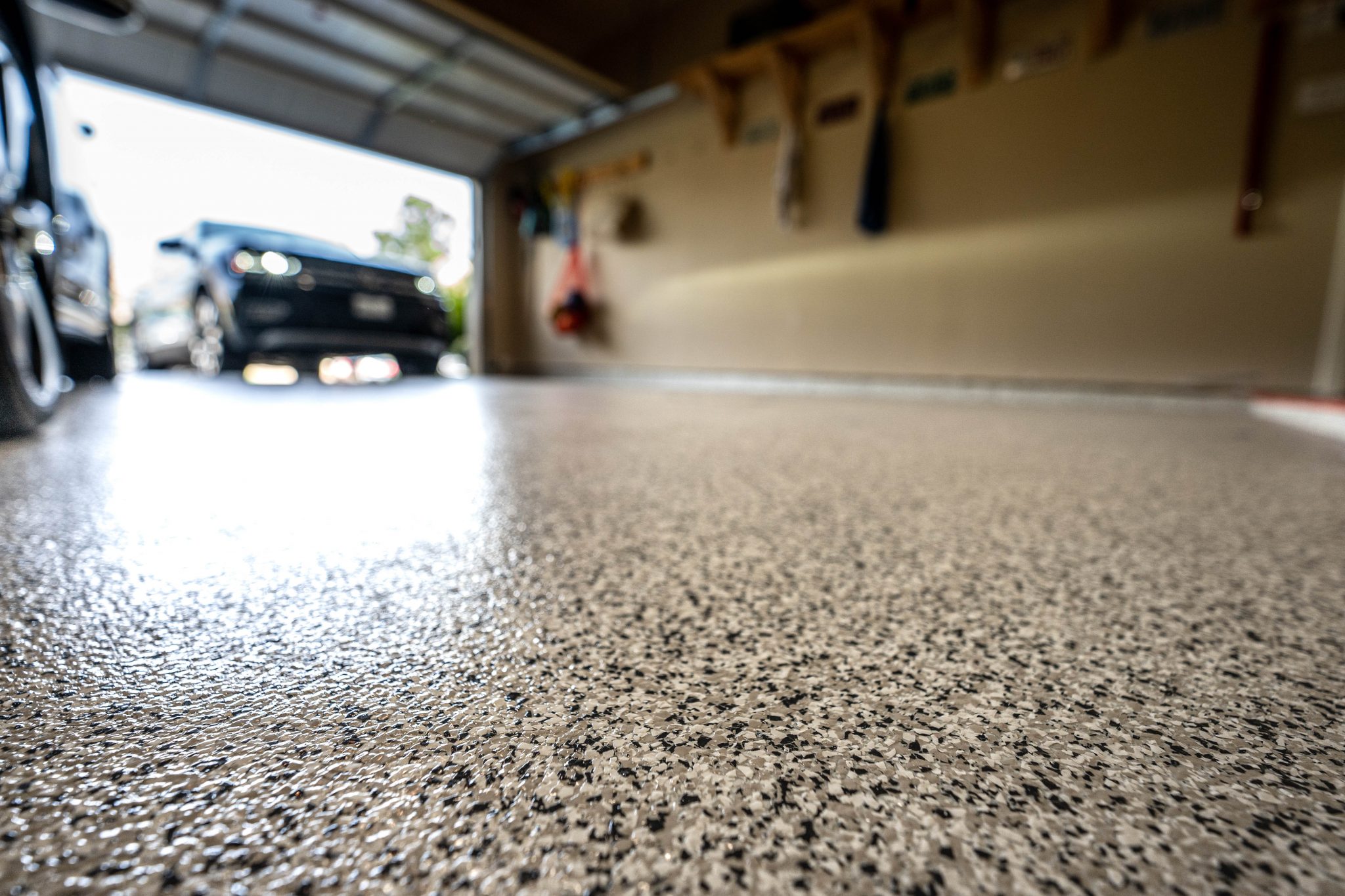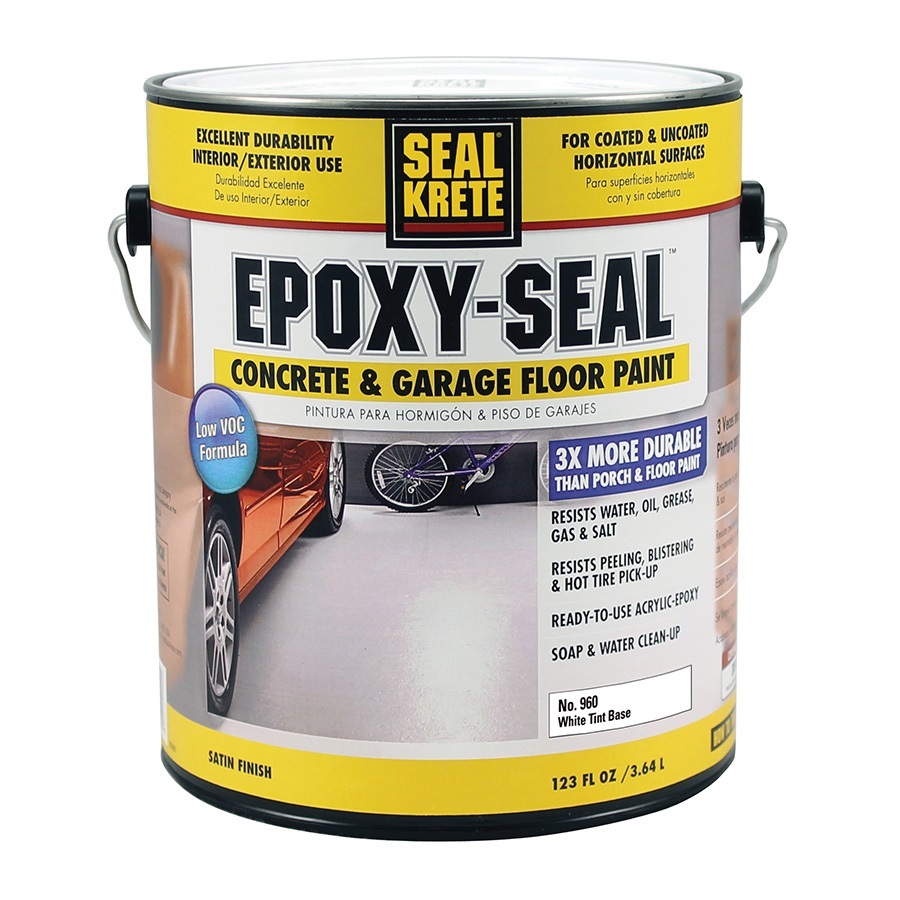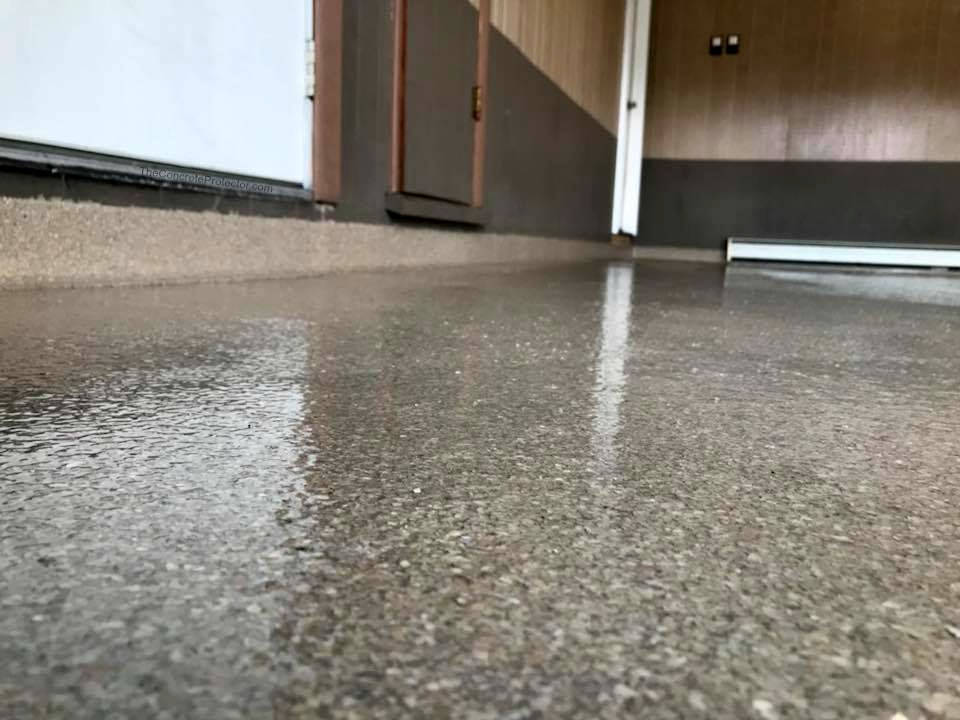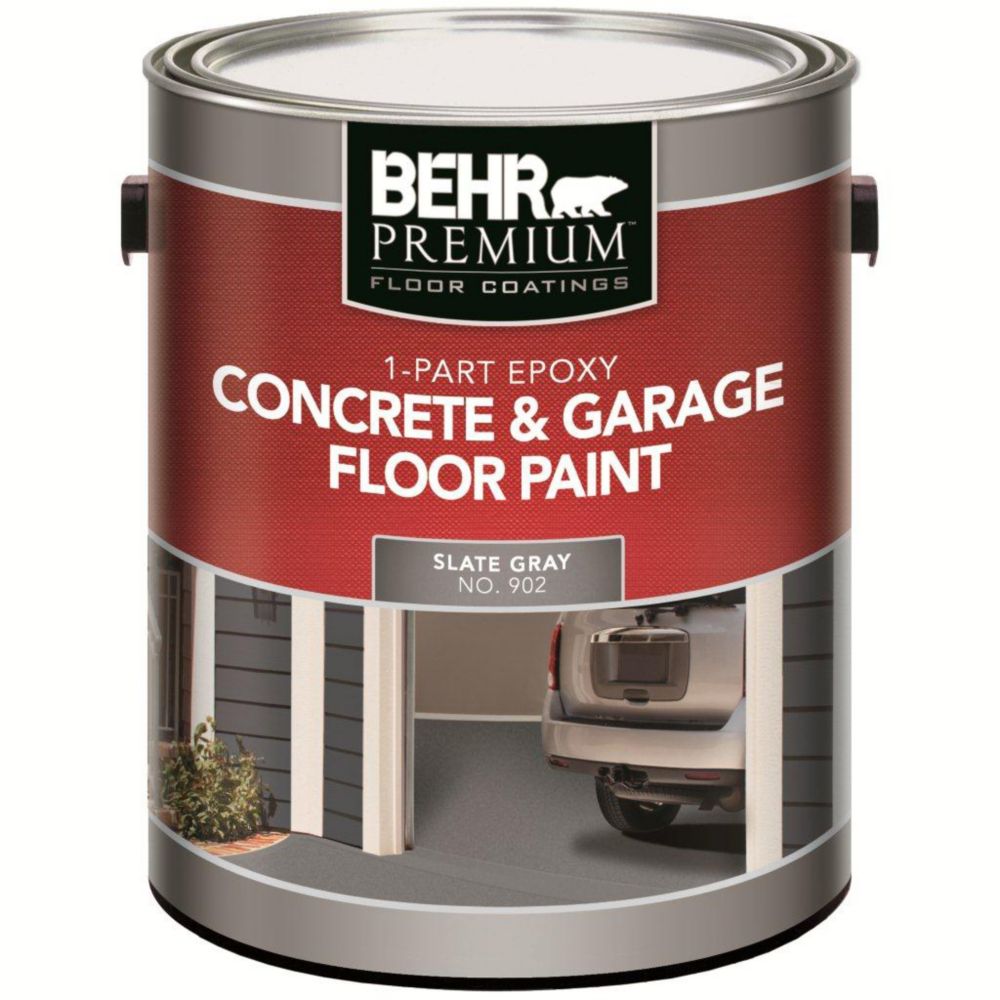Epoxy paint is a popular choice for garage floors due to its durability, aesthetic appeal, and ability to resist stains, chemicals, and heavy traffic. This guide will walk you through the steps of preparing, applying, and maintaining an epoxy-coated garage floor. Additionally, we will discuss common mistakes to avoid and provide answers to frequently asked questions.
Preparation
Cleaning the Floor
The first step in painting a garage floor with epoxy is thorough cleaning. Remove all items from the garage and sweep away any dirt and debris. Next, use a degreaser to eliminate any oil or grease stains. These stains can prevent the epoxy from adhering properly, leading to peeling or bubbling. Scrub the floor with a stiff-bristle brush and rinse it with a pressure washer or hose. Allow the floor to dry completely before moving to the next step.
Repairing Cracks and Holes
Inspect the floor for any cracks, holes, or other imperfections. Epoxy paint will not fill these gaps, and they will be visible through the finished surface. Use a concrete patching compound to fill in any cracks or holes. Follow the manufacturer’s instructions for mixing and applying the compound. After filling the imperfections, allow the patch to dry completely and then sand the patched areas to ensure a smooth surface.
Etching the Concrete
Etching the concrete is essential for creating a surface that the epoxy can bond to. This process involves applying an etching solution, usually an acid-based product, to the floor. Follow the manufacturer’s instructions for mixing and applying the etching solution. Wear protective gear, including gloves, goggles, and a mask, to protect yourself from the fumes and splashes. Apply the solution evenly across the floor, and then scrub it with a stiff-bristle brush. Rinse the floor thoroughly with water to remove any residue and allow it to dry completely.
Testing for Moisture
Before applying the epoxy, it is crucial to test the floor for moisture. Epoxy paint will not adhere properly to a damp surface. Tape a plastic sheet (about 2 feet by 2 feet) to the floor, sealing all edges with duct tape. Leave the sheet in place for at least 24 hours. If condensation forms under the plastic, the floor is not dry enough for epoxy application. Address any moisture issues before proceeding.

Applying the Epoxy
Choosing the Right Epoxy
There are different types of epoxy paints available, including one-part and two-part systems. Two-part epoxy systems are generally more durable and suitable for garage floors. These systems consist of a resin and a hardener that must be mixed before application. Choose a high-quality epoxy product that is specifically designed for garage floors. Read reviews and consider the product’s durability, ease of application, and resistance to chemicals and stains.
Mixing the Epoxy
Follow the manufacturer’s instructions for mixing the epoxy resin and hardener. Mix the components thoroughly to ensure an even and consistent application. Most epoxy kits come with a mixing paddle that can be attached to a drill. Mix the epoxy in a well-ventilated area and wear protective gear, including gloves and a mask, to protect yourself from fumes and splashes. Once mixed, the epoxy has a limited pot life, meaning it must be applied within a certain timeframe before it begins to harden.
Applying the Base Coat
Begin by applying the epoxy along the edges of the floor using a paintbrush. This process, known as cutting in, ensures that the edges are coated thoroughly. After cutting in, use a roller with an extension handle to apply the epoxy to the rest of the floor. Work in small sections, maintaining a wet edge to avoid lap marks. Apply the epoxy evenly, avoiding puddles or thin spots. Allow the base coat to cure according to the manufacturer’s instructions, usually around 24 hours.
Adding Decorative Chips
If you want to add decorative chips to your garage floor, do so while the base coat is still wet. These chips add texture and visual appeal to the floor. Sprinkle the chips evenly across the wet epoxy, working in small sections to ensure they adhere properly. Do not walk on the wet epoxy while applying the chips. Once you have finished, allow the base coat to cure completely before proceeding to the next step.
Applying the Top Coat
Mixing the Top Coat
After the base coat has cured, it is time to apply the top coat. The top coat provides additional durability and protection for your garage floor. Mix the top coat epoxy according to the manufacturer’s instructions. Like the base coat, the top coat has a limited pot life, so it must be applied within a certain timeframe after mixing. Ensure thorough mixing for an even application.
Applying the Top Coat
Apply the top coat in the same manner as the base coat. Begin by cutting in the edges with a paintbrush, and then use a roller to cover the rest of the floor. Work in small sections and maintain a wet edge to avoid lap marks. If you added decorative chips to the base coat, you might want to use a clear top coat to allow the chips to show through. Apply the top coat evenly and avoid puddles or thin spots. Allow the top coat to cure according to the manufacturer’s instructions.
Allowing for Proper Curing Time
Proper curing is essential for the durability and longevity of your epoxy floor. Avoid walking on the floor until it has fully cured, which can take several days depending on the product and environmental conditions. Do not place any heavy objects or vehicles on the floor until the curing process is complete. Follow the manufacturer’s recommendations for curing times and conditions.
Regular Maintenance
Maintaining your epoxy-coated garage floor is relatively easy. Sweep or vacuum regularly to remove dirt and debris. Clean up spills promptly to prevent staining. For routine cleaning, use a mild detergent and water solution. Avoid using abrasive cleaners or tools that can damage the epoxy surface. Regular maintenance will keep your epoxy floor looking great and extend its lifespan.
Common Mistakes to Avoid
Inadequate Surface Preparation
One of the most common mistakes is inadequate surface preparation. Skipping steps such as cleaning, repairing, and etching the concrete can result in poor adhesion and a subpar finish. Take the time to properly prepare the surface to ensure a successful epoxy application.
Not Following Manufacturer’s Instructions
Each epoxy product has specific instructions for mixing, application, and curing. Not following these instructions can lead to issues such as improper curing, bubbling, or peeling. Carefully read and follow the manufacturer’s guidelines for the best results.
Applying Epoxy in Poor Conditions
Environmental conditions play a significant role in the success of an epoxy application. Applying epoxy in high humidity, extreme temperatures, or poor ventilation can affect its performance and durability. Ensure that you apply the epoxy in optimal conditions as recommended by the manufacturer.
Using Low-Quality Epoxy
Using low-quality epoxy products can result in a less durable and less attractive finish. Invest in a high-quality epoxy system that is specifically designed for garage floors. Research and read reviews to choose a product that offers the best performance and longevity.
How long does it take to paint a garage floor with epoxy?
The entire process of painting a garage floor with epoxy can take several days to a week, depending on the preparation, application, and curing times. Surface preparation, including cleaning, repairing, and etching, can take a full day or more. Applying the base coat and allowing it to cure typically takes 24 hours. Adding decorative chips and applying the top coat can take another day, with the top coat requiring additional curing time. It is essential to follow the manufacturer’s recommended curing times for the best results.
Can I apply epoxy over an existing paint or coating?
For the best adhesion, it is recommended to remove any existing paint or coating before applying epoxy. Epoxy bonds best to clean, bare concrete. Existing paint or coatings can prevent proper adhesion, leading to peeling or bubbling. Use a concrete grinder or chemical stripper to remove any existing coatings, and follow up with thorough cleaning and etching to prepare the surface for epoxy application.
How do I maintain an epoxy-coated garage floor?
Maintaining an epoxy-coated garage floor is relatively straightforward. Regularly sweep or vacuum the floor to remove dirt and debris. Clean up spills promptly to prevent staining. For routine cleaning, use a mild detergent and water solution. Avoid using abrasive cleaners or tools that can scratch or damage the epoxy surface. Periodically inspect the floor for signs of wear or damage and address any issues promptly to extend the life of the epoxy coating.
Is epoxy flooring slippery?
Epoxy flooring can be slippery when wet, especially if a high-gloss finish is used. To reduce the risk of slips and falls, consider adding a non-slip additive to the top coat. These additives create a textured surface that improves traction without compromising the appearance of the floor. Non-slip additives are available in various grits, allowing you to choose the level of traction that best suits your needs.
Can I apply epoxy flooring myself, or should I hire a professional?
Applying epoxy flooring can be a DIY project if you are comfortable with surface preparation and following detailed instructions. However, it requires careful attention to detail and proper timing. If you are unsure or want a flawless finish, hiring a professional is recommended. Professionals have the experience and tools to ensure a high-quality, long-lasting epoxy floor. They can also provide a warranty for their work, giving you peace of mind.
Types of Garage Floor Epoxy in the Market Today in 2020 (With images) Garage epoxy, Garage
Pin on Basement flooring paint
Best Garage Floor Paint 2024
Behr 1-Part Epoxy Acrylic Concrete & Garage Floor Paint
Legacy Garage Floors: Epoxy Garage Floor Orlando Pics!!
Rust-Oleum EpoxyShield 2 gal. Gray 2-Part High-Gloss Epoxy Garage Floor Coating Kit Garage
How To Apply Garage Floor Epoxy Like a Pro
Related Posts:









/7184880388_7a10367e16_k-587ae00d5f9b584db399e346.jpg)